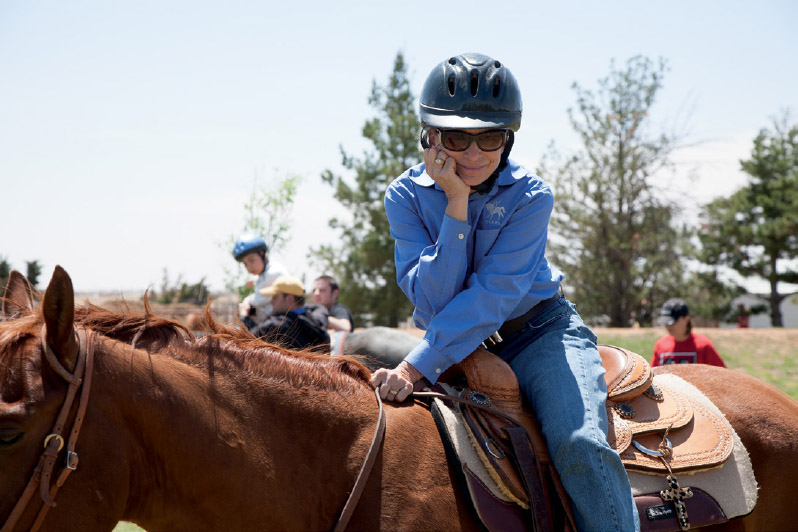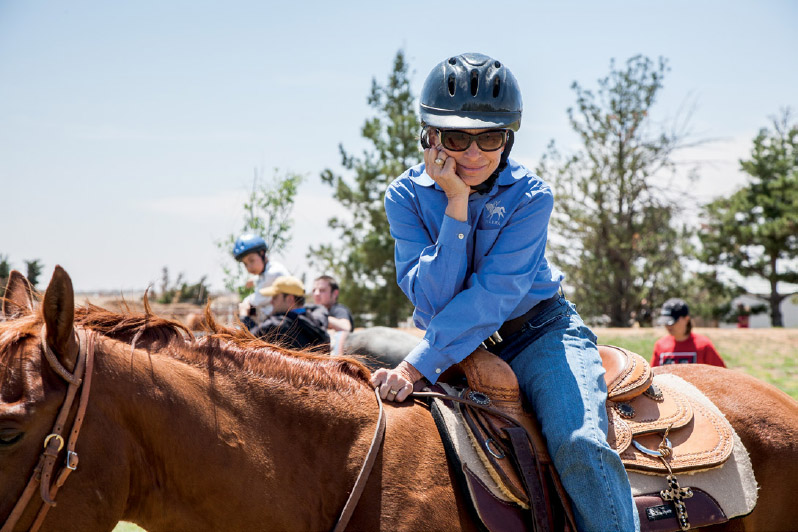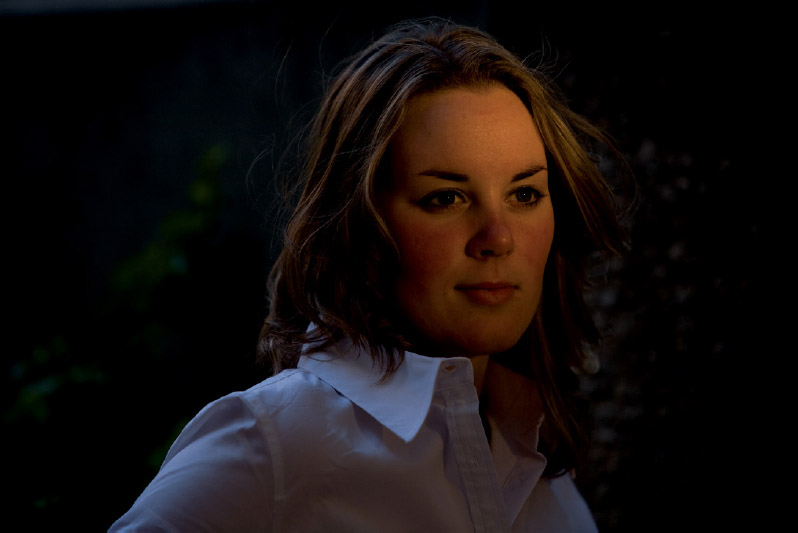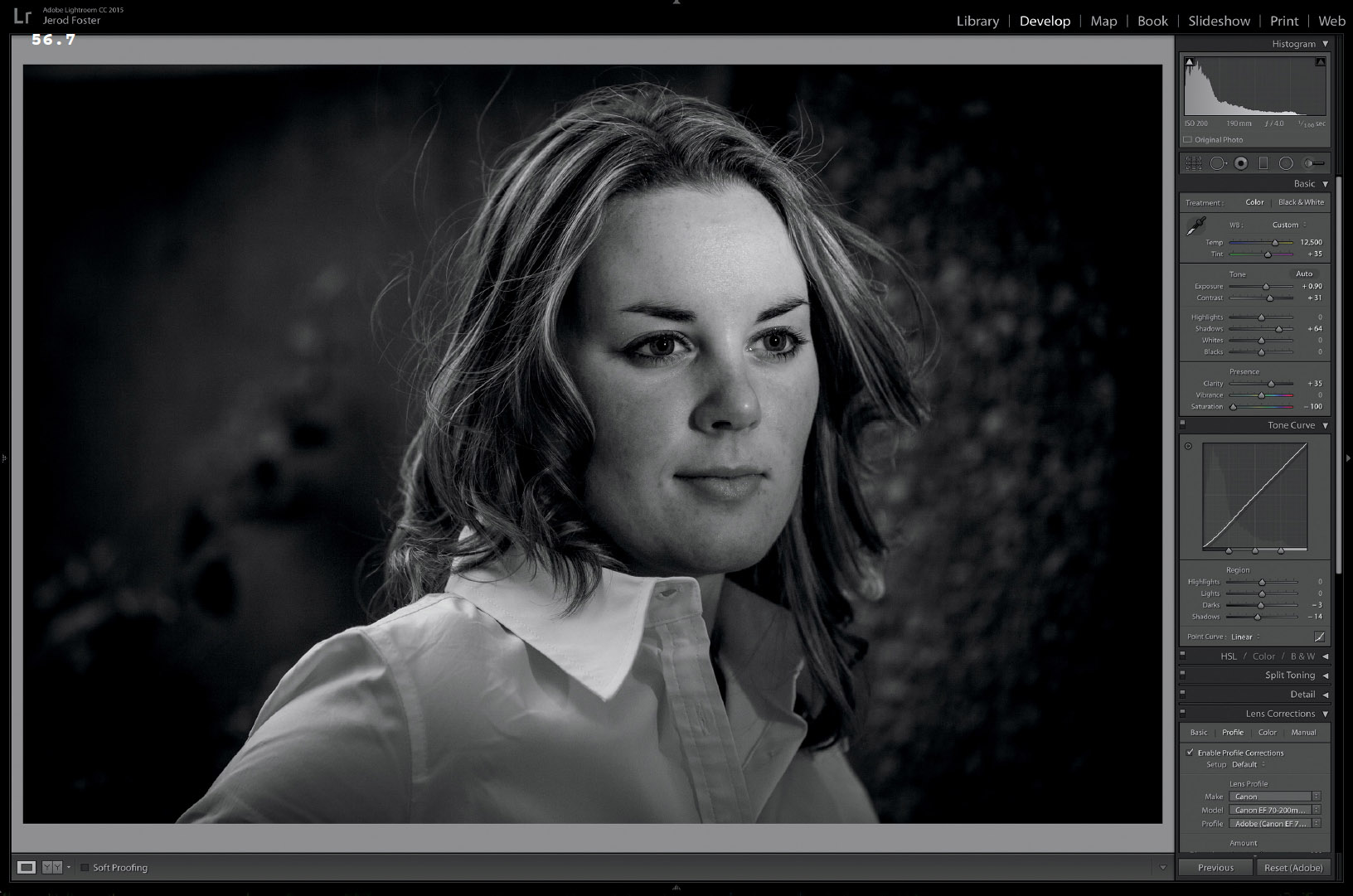56. THE POWER OF RAW IN POST
![]()
IN THE SECOND chapter, I mentioned how shooting in the RAW file format affords you great control over adjusting your image’s white balance in post. Indeed, one of the strongest reasons to shoot in RAW is to quickly and effectively adjust white balance, but the RAW format has many more advantages. There’s no doubt that if you’ve been behind a camera any amount of time, you’ve heard other portrait photographers mention shooting only in RAW. They do so for good reason:
- 1 Hold on to the details. The RAW file format lets you capture all of the detail the digital sensor is capable of, so when you begin your post-processing workflow, you are always working with the complete capabilities of the camera. The idea is that you shoot in RAW to “cook” later in post. Although there is certainly nothing wrong with shooting in high-resolution JPEG file format, it’s good to know that when doing so, the camera does the “cooking” for you and compresses the RAW file into the JPEG format. In essence, the camera keeps what is necessary (per the manufacturer’s specifications) and trashes the rest of the information captured by the sensor. This can sometimes result in throwing away certain digital values that can be useful later in post, and it certainly limits how much you can push the JPEG file later in post. If you want as much control as possible over your portrait files, it’s best to shoot in RAW (Figure 56.1 and Figure 56.2).
- 2 A world of interpretation. Since the RAW file contains all of the data the sensor is capable of capturing, you are able to manipulate a great deal of the portrait file in post-processing. Want to adjust the exposure? Contrast? Cleanly open up the shadows a bit? Or, how about taming those extremely bright and distracting highlights? The RAW file allows you to easily make these adjustments, as well as a host of others (Figure 56.3 and Figure 56.4). Honestly, the extent to which you can make post-processing adjustments is based on the RAW processing engine you are using (such as Adobe Camera Raw, which is found in Adobe Lightroom, Bridge, and Photoshop).
56.1 The shot straight out of the camera features Dr. Brady during a hippotherapy class with a distractingly bright sky.
56.2 Since the portrait was shot in RAW, I was able to tone the sky down and open up the shadows on Dr. Brady with much more tolerance than a JPEG would have allowed.
56.3 The original portrait took advantage of some interesting light, but I underexposed it quite a bit and the background was just bright enough to be a distraction.
56.4 Shooting in RAW opens up a great more interpretive power. Instead of leaving the image in color, I chose to make it a black and white, enabling the true evocative mood of the light. Likewise, I opened up the shadows a bit more, which allowed for the background to play a larger role in the frame.
You can certainly make many of the interpretive adjustments to JPEG files, but the JPEG file is not configured to handle this extra “cooking” as easily (Figure 56.5 and Figure 56.6). The structural integrity of the JPEG file will begin to fall apart more quickly and the result is more visually apparent if you push the JPEG manipulations too far (which isn’t very far at all). Likewise, some of the adjustments that you can make to RAW files even look functionally different than the same adjustment to JPEGs. Again, in the end, the RAW file format is the most functionally and creatively interpretive file format, and when making adjustments to portraits means working in post to make the subject appear their best or most accurate, it’s the file format I encourage you to use.
- 3 Non-destructive workflow. Quite possibly the most important reason to shoot in RAW is the fact that it is the foundation for establishing a non-destructive digital workflow. This means that your original file will never be compromised. Aside from completely deleting them from your memory card and/or your hard drive, the RAW file cannot technically be tampered with. Your workflow software, instead, creates a file to which any manipulations to the image made are written to an adjacent file, not directly to the RAW file. Again, with the advancements in software technology, JPEGs can also be used in non-destructive workflows, but it may suffer further compression depending on how you export the files from your applications. The RAW file, however, is an uncompressed image file to begin with and undergoes compression for the first time when it is finally exported into a completely different file format, leaving the original file untouched on your hard drive.
If there’s a running theme among all of the preceding reasons to shoot in RAW, it is control. Take as much control over your workflow as possible. Although JPEGs make shooting a finished product an efficient workflow, the RAW file gives you complete control over how the image is processed. One downside to shooting in RAW is that it comes with a bit of a learning curve (a curve that may be steep depending on your workflow software) (Figure 56.7), and it is a slightly more inefficient file format than the JPEG (you have to actually process out a RAW file to a globally usable file format—think JPEG and TIFF—while a JPEG is technically ready to go). Did I mention it’s a much larger file, placing more demand on storage space? Still, the amount of file information and the amount of control you gain when shooting in RAW far outweighs shooting in and working completely with JPEGs.
Lastly, the portrait you want to achieve is more easily actualized when shooting in RAW. Many photographers begin a shoot with an idea of what the finished portraits will look like after post. JPEGs are limited in how far they will take you toward making your visualization a final product in post-processing. However, the RAW format, for those reasons listed above, allows you to shoot and process for as much of your vision as technically possible.
56.5 This cowboy’s portrait has been processed from a RAW file with only minor adjustments to contrast.
56.6 The JPEG version of this portrait, compared to the one worked up from a RAW, does not handle the same adjustments as cleanly. The colors are a bit more saturated, and the shadows are not as open. Furthermore, a JPEG like this would be more difficult to adjust given the relatively low information it contains compared to the RAW image.
56.7 Most RAW image processors, like the one from Adobe Lightroom’s Develop module, come with a bit of a break-in period in which the photographer must become acquainted with its tools. However, the results and workflow flexibility they afford you in the short and long term are big payoffs for the investment.







